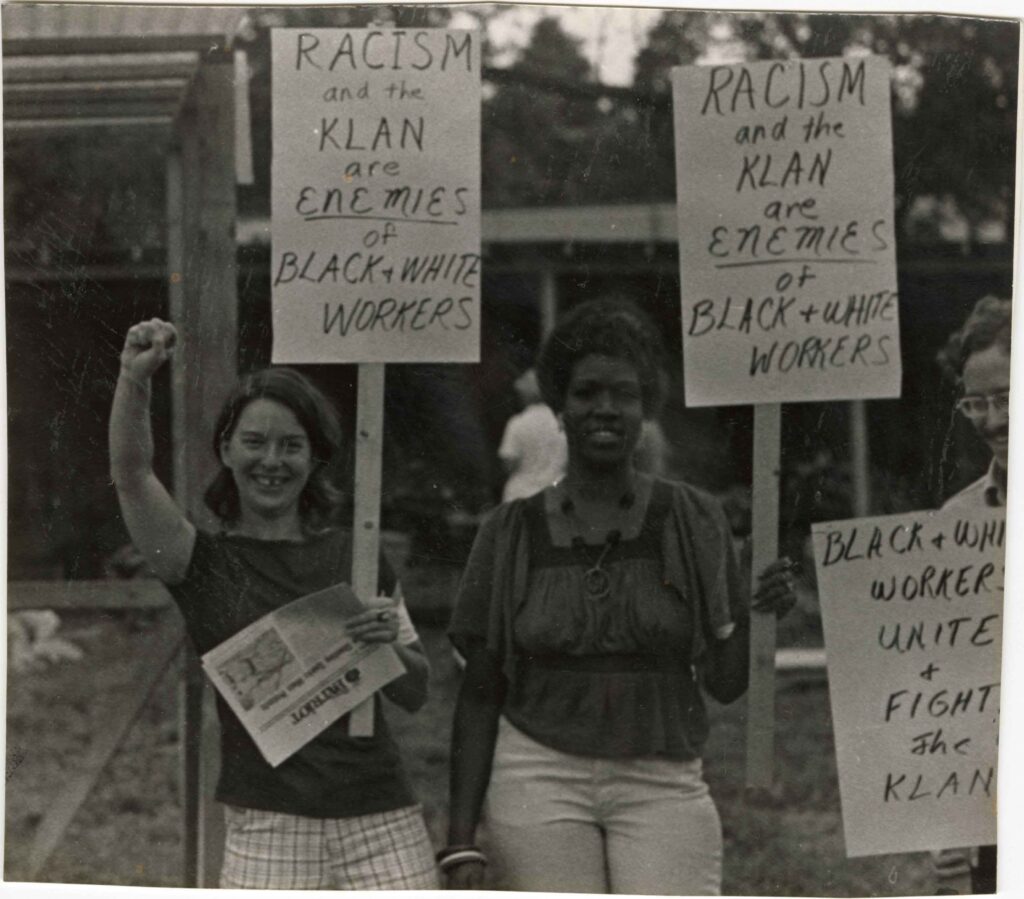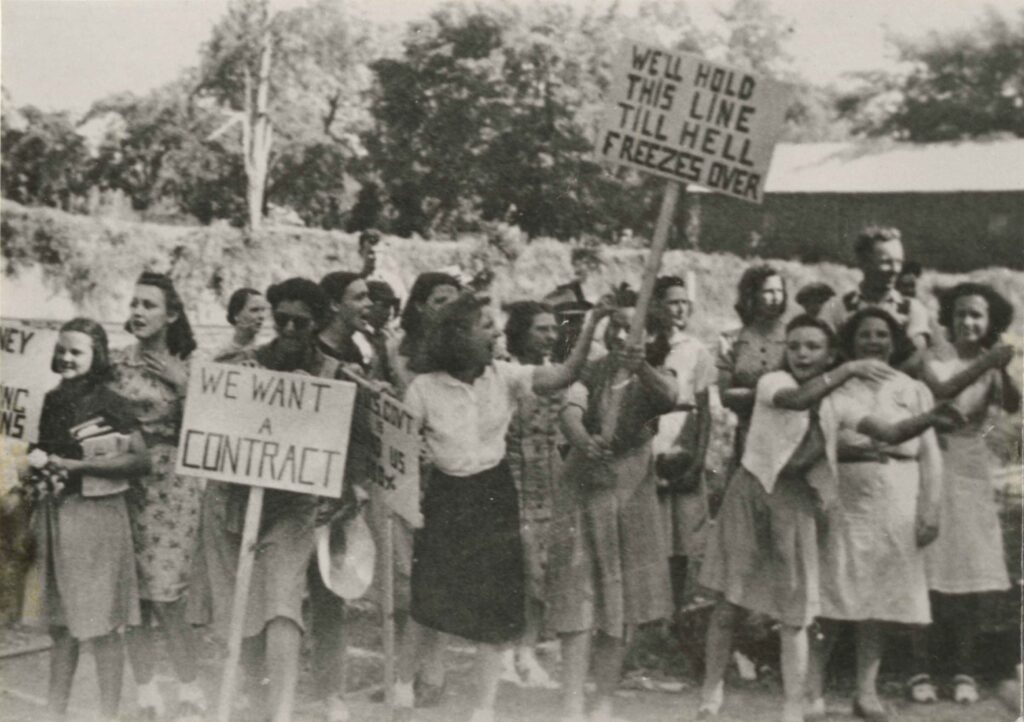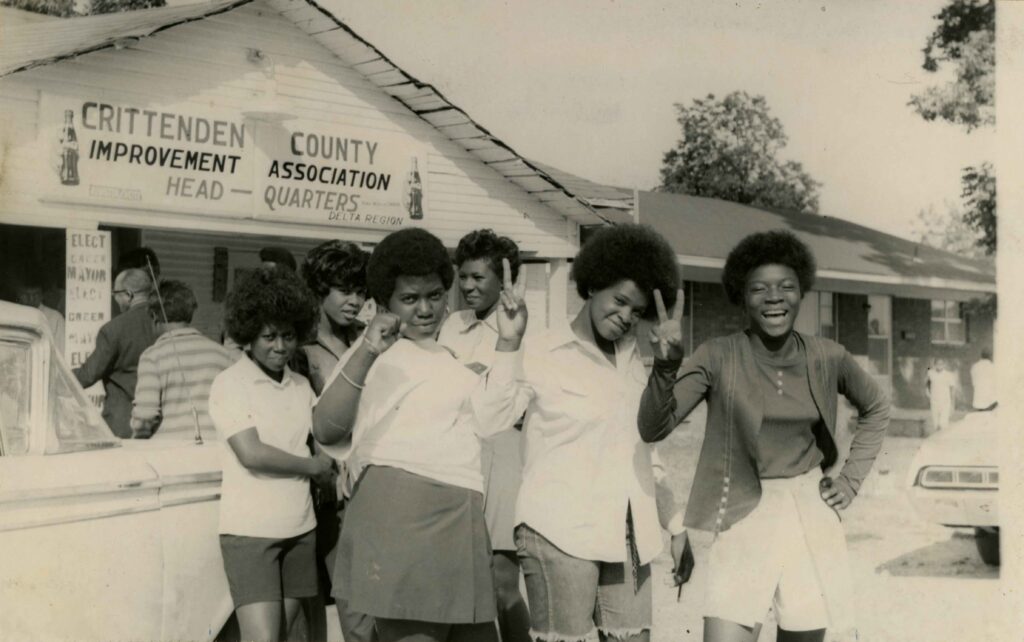Researching the “Fighting for Freedom” Exhibit
“Fighting for Freedom: Labor and Civil Rights in the American South” is made up of material from the Southern Labor Archives at Georgia State University and the AFL-CIO Archive at University of Maryland. My job was to go through these archives—which is to say, browse hundreds of pages of photographs, newspaper clippings, telegrams, handwritten letters, memos, protest posters, questionnaires, speech transcripts, case dockets, and memoirs—and find the raw material that could tell some of our [exhibit’s] stories: how the struggles and activists of the Civil Rights Movement intersected with those of organized labor in the American South.
As I went along, I made notes first in legal pads of any item that caught my eye, then in a giant—truly—spreadsheet of the most interesting of those items. These massive charts helped us begin to conceptualize some of the exhibit’s biggest stories, split into a rough chronology of the twentieth century: the Charleston Hospital Workers Strike, the racist and anti-labor White Citizens Councils, Coretta Scott King’s crusade for full employment, and the relentless anti-unionism of the segregated South.

Some narratives play themselves out across multiple items, where we see a story unfold through numerous points of view, each with their own priorities and relationship to labor activism. In one such story, the director of a textile workers’ union in South Carolina writes an anxious letter to the director of the AFL-CIO Civil Rights Department about potentially explosive tensions between integrated unionists and segregated mill workers in his small town; the Civil Rights Department official forwards this letter and a union organizer’s report to Al Kehrer, who responds that the situation seems typically contentious for the South and recommends putting together some sort of assembly in a few weeks’ time with the help of local Black community leaders to cool things down. Meanwhile, the union organizer’s report describes how he was physically attacked while canvassing, and he concludes at the end of his letter—in which he logs the recent suspicious deaths and goings-on around the textile mill as Black workers try to both unionize and stay alive and employed—that the company that owns the mill has triumphed in keeping their workers fighting each other instead of for their own labor rights. The organizer’s report is handwritten, and his levelheaded tone transcribing the words of his attackers and his cool analysis of what feels like an increasingly hopeless and violent situation reads almost like war journalism.

Ultimately, the research and curation that went into picking the material of the “Fighting for Freedom” exhibit could only focus on a small number of stories. Our hope is that students and scholars from across the country realize by exploring the exhibit, that GSU’s Southern Labor Archive contains thousands of such stories, from the writings and speeches of the most recognizable figures of the Civil Rights Movement to the photographs and letters of grassroots activists and unnamed working class people. We hope that by telling some of their stories, future storytellers might come along and rediscover more.

Interested in learning more? Attend the Fighting for Freedom Exhibit opening on 9/28 at 5. Register here!
The Special Collection & Archives department would like to thank our sponsors who helped make this exhibit possible: Council on Library & information Resources, Georgia AFL-CIO, IBEW Local 175, United Steelworkers District 9.
Written by Meg Fancher, Graduate Research Assistant for the Southern Labor Archives